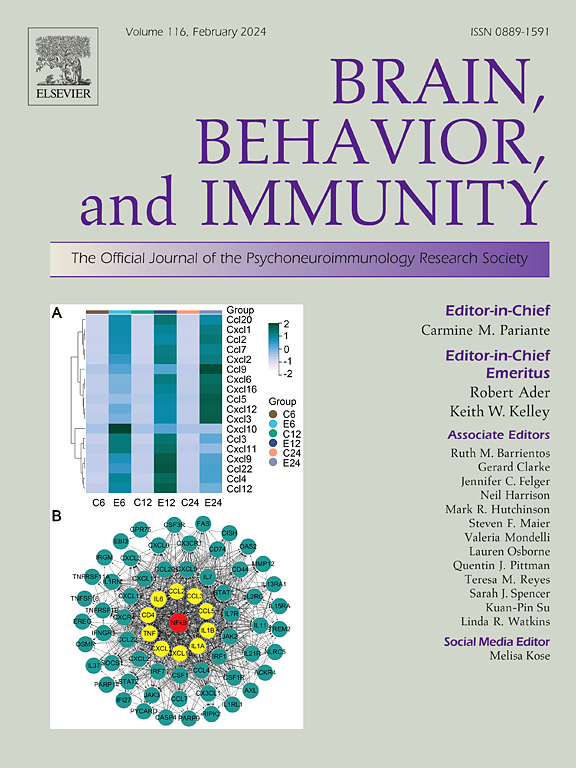Hormonal contraceptives in adolescence impact the neuroimmune environment of the medial prefrontal cortex and hippocampus in female rats
IF 8.8
2区 医学
Q1 IMMUNOLOGY
引用次数: 0
Abstract
Adolescence is a period of protracted neurodevelopment, during which the prefrontal cortex (PFC) undergoes significant remodeling. Microglia are integral to neurodevelopment and are sensitive to gonadal hormones, which increase during adolescence. Microglia and gonadal hormones can interact to influence adolescent development of the PFC (or medial prefrontal cortex [mPFC] in rodents). In females, gonadal hormones can be perturbed by using hormonal contraceptives (HCs). We predicted that HC administration over adolescence could affect microglia, other immunocompetent cells, and the neuroimmune environment of the developing mPFC. We also assessed HC effects on neuroimmune measures in the hippocampus, as the hippocampus also matures throughout adolescence and is sensitive to ovarian hormones. Intact post-pubertal female Sprague-Dawley rats received daily subcutaneous injections of vehicle or 10 ug ethinyl estradiol + 20 ug levonorgestrel (HCs) throughout adolescence from postnatal day (PND) 35–56. On PND 57 or 58, brains were collected for immunohistochemistry and qPCR. In the mPFC, HC-treated rats showed less Iba1 (microglia) immunolabeling and fewer Iba1+ cells. HC treatment also altered microglia morphology and reduced the spacing between microglia in the mPFC. In the hippocampus, HC-treated rats had reduced Iba1 immunolabeling in the dorsal CA1 and reductions in microglial cell complexity in dorsal CA1, ventral CA1, and ventral CA3. There were no effects of HCs on GFAP (astrocyte) immunolabeling in the mPFC or on astrocytes in any hippocampal subregion analyzed, except an increase in astrocyte number in the dorsal dentate gyrus. mPFC expression of genes related to phagocytosis (Cd68, Trem2) and neuroimmune signaling (Cx3cr1, Cx3cl1) were reduced in rats treated with HCs, but no gene expression changes were seen in the hippocampus. These data provide the first evidence that HCs given during the critical developmental period of adolescence can affect microglia properties in limbic brain regions.
求助全文
约1分钟内获得全文
求助全文
来源期刊
CiteScore
29.60
自引率
2.00%
发文量
290
审稿时长
28 days
期刊介绍:
Established in 1987, Brain, Behavior, and Immunity proudly serves as the official journal of the Psychoneuroimmunology Research Society (PNIRS). This pioneering journal is dedicated to publishing peer-reviewed basic, experimental, and clinical studies that explore the intricate interactions among behavioral, neural, endocrine, and immune systems in both humans and animals.
As an international and interdisciplinary platform, Brain, Behavior, and Immunity focuses on original research spanning neuroscience, immunology, integrative physiology, behavioral biology, psychiatry, psychology, and clinical medicine. The journal is inclusive of research conducted at various levels, including molecular, cellular, social, and whole organism perspectives. With a commitment to efficiency, the journal facilitates online submission and review, ensuring timely publication of experimental results. Manuscripts typically undergo peer review and are returned to authors within 30 days of submission. It's worth noting that Brain, Behavior, and Immunity, published eight times a year, does not impose submission fees or page charges, fostering an open and accessible platform for scientific discourse.

 求助内容:
求助内容: 应助结果提醒方式:
应助结果提醒方式:


